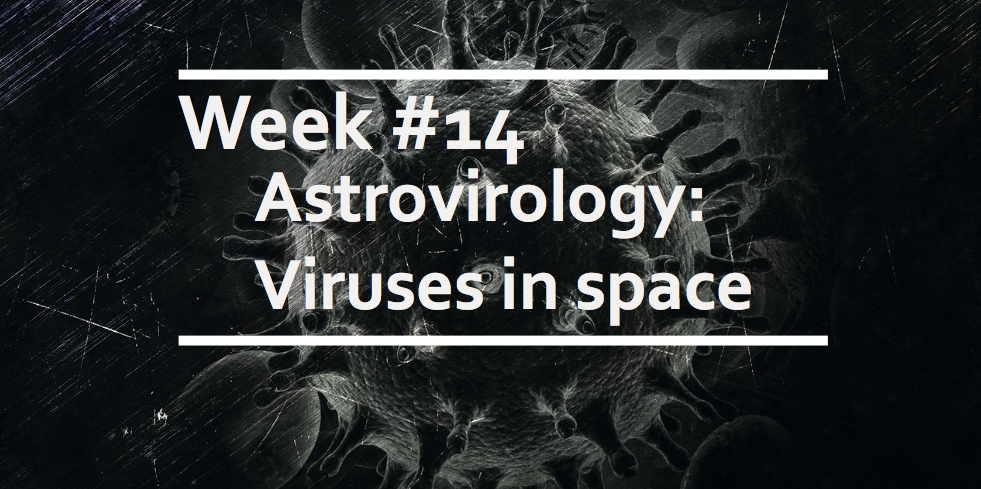Astrovirology: Viruses in space
Have you ever wondered if viruses are blasted into space by asteroid impacts or volcanoes, whether viruses can survive in space or how we could detect alien viruses that might exist on Jupiter’s moons? If you’re curious about any of the above, we recommend “Astrovirology: Viruses at Large in the Universe”. This article by Aaron Berliner (University of California), Tomohiro Mochizuki (Tokyo Institute of Technology) and Kenneth Stedman (Centre for Life in Extreme Environments, Portland State University) addresses these questions while reviewing virology research pertinent to astrobiology (the study of the origin, evolution, distribution, and future of life in the universe).
Does Astrobiology ignore viruses?
The authors begin by lamenting the apparent neglect of viruses in the NASA Astrobiology Strategy and European AstRoMap. To address this, their review aims to emphasize the critical and underappreciated roles of viruses in astrobiology and proposes a roadmap for future astrovirology research.
The critical and underappreciated roles of viruses
It is easy to fall into the habit of thinking about viruses in terms of how they damage humans and how best we can immunize against that. However, with this review, Berliner et al. do a great job of broadening our appreciation of viruses. The authors do this by first presenting some basic principles of virology (aimed at those in the astrobiology community that might not yet fully appreciate “the ubiquity, diversity, and roles of viruses in biogeochemistry, evolution, and the origins of life” but also suitable for any interested layperson), followed by an inclusive definition of viruses, a review of virology research relevant to astrobiology, and proposing future directions for astrovirology research.
An inclusive definition of viruses
Suppose we are setting off in search of ancient or extraterrestrial viruses. It would be useful if we could first all agree on what a virus is. The authors do a nice job of walking through the changing definitions of viruses. This begins with the wholly practical definition of “a disease-causing particle that passed through a filter that retains all known bacteria (a contagious living liquid)” (citing Beijerinck, 1898). Later, advances in microscopy revealed that viruses have an inert extracellular state (the viron, once referred to as “a piece of bad news wrapped up in a protein” – Sir Peter Medawar). Ultimately, the authors settle on Salvador Luria and colleagues’ definition as their favourite: “Viruses are entities whose genomes are elements of nucleic acid that replicate inside living cells using the cellular synthetic machinery and causing the synthesis of specialized elements that can transfer the genome to other cells” (Luria et al. 1978).
Current virology research pertinent to astrobiology
When someone mentions viruses, you likely think of influenza, Zika or HIV. It is less likely you imagine how viruses out-number cellular life by at least 10 to 1 (Suttle, 2005), or that the famous chalky white cliffs of Dover on England’s south-east coast are likely the result of a massive, virus-mediated lysis of coccolithophore algae (Wilson et al., 2009). These fascinating titbits and others collected together by Berliner et al. have two functions. First, they emphasize the importance of virology beyond human disease. Second, they have important practical relevance for the field of astrovirology. For example, given the difficulties associated with differentiating virus from cellular material in bulk samples, the authors suggest that detection of virus-mediated events (ancient or extraterrestrial [e.g., the white cliffs of Dover]) might be more practical than sifting through collected samples.
Future Outlook
The authors finish by suggesting future astrovirology experiments and important questions to be addressed. Among these, we particularly like the proposal of searching for virus biomarkers in waters collected from Jupiter’s moon, Europa. The logic for this is straightforward. Earth’s oceans are packed full of virions (several million virons in 1 ml of seawater). Therefore, if virons were as abundant in the subsurface oceans of Europa as they are on Earth, it might be possible to detect virus-like particles in the water plumes that have been seen erupting from this alien moon. If we could detect virus biosignatures from extraterrestrial water, well wouldn’t that be exciting!




